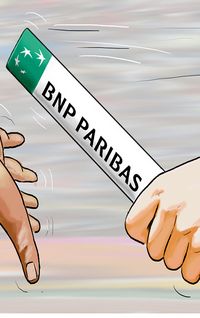Senior success
Selling something new is always a challenge, and BPCE’s first offering of senior non-preferred bonds in the yen market was no exception.
BPCE in January became the first French bank to introduce SNP bonds to Japan, coming to market only weeks after the Sapin II law created the new asset class.
The swift delivery of the ¥142.7bn (US$1.3bn) deal made it look easy, but that belied the hard work behind the scenes.
The issuer spent lots of time explaining the purpose, structure and risks of the new-style securities to Japanese investors, including at a Mizuho conference in October and a five-day roadshow in November for central and regional investors. Bankers, too, had made enormous efforts to outline the features of the bonds at conferences and in analysts’ reports since 2015.
Documentation, managed by Nomura, was also complicated. Unlike the UK, where many banks have a holding company structure and therefore did not need to make a major change to documentation for Samurai issuance, the new structure required extensive revisions to abide by French and Japanese laws.
BPCE’s consideration for Japanese investors was noteworthy. As a committed issuer in the Samurai market, it sought a rating from a Japanese agency to broaden the bonds’ appeal. In addition to BBB+ from S&P and A from Fitch, the bonds are rated A– by R&I, which helped attract Japanese investors.
Furthermore, it secured eligibility in the Nomura BPI, a major bond index tracked by pension funds.
BPCE selected the five-year tenor, a perennial favourite among Japanese investors, for the SNPs and, for those who were not yet ready to buy them, it also provided senior preferred bonds of seven and 10 years, successfully attracting a wide range of investors.
Asset managers and trust banks, both of which invest on behalf of pension funds, bought 65% of the ¥69.6bn of 0.64% five-year senior non-preferred bonds. City banks were the main buyers of the ¥64.6bn of 0.38% seven-year senior; and Shinkin banks took 79% of the ¥8.5bn of 0.527% 10-year senior.
The senior non-preferred bonds were priced at 50bp over yen offer-side swaps, identical to Lloyds’ holdco Samurai priced in December 2016. The seven and 10-year senior bonds were priced at 19bp over and 24bp over, respectively.
The strong result came despite plenty of competing supply that month, and at a time when the upcoming French election was causing investors some anxiety.
The success of BPCE’s transaction and its strong performance in secondary trading paved the way for other French banks to follow in the months afterwards.
Daiwa, Mizuho, Natixis, Nomura and SMBC Nikko were joint bookrunners on the deal.
To see the digital version of this review, please click here.
To purchase printed copies or a PDF of this review, please email gloria.balbastro@tr.com.


